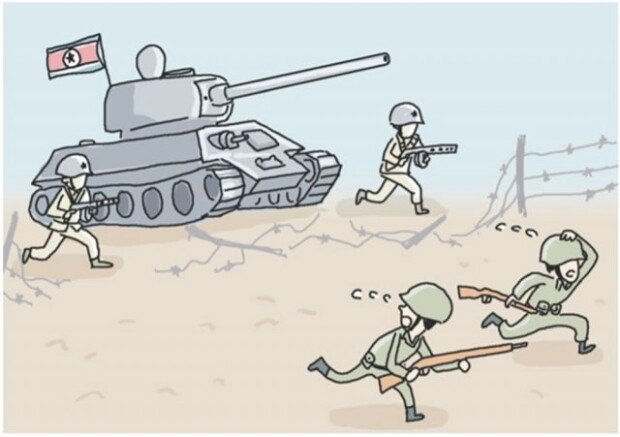Unprepared war
Unprepared war
Posted June. 29, 2021 07:22,
Updated June. 29, 2021 07:22

It was in the morning of June 25, 1950. Back then, Kaesong was still part of the Republic of Korea. The 12th Regiment of the 1st Division was stationed in the city, and Kaesong was the first city to be exposed to the invasion when the war broke out. The 1st and 6th Divisions of the North Korean military attacked Kaesong with the sixth Division attempting to march down the city. The sixth Division was a North Korean military unit recognized by both the South Korean and American commanders to be the most competent forces from the North.
The first skirmish occurred near Mt. Songak when the advance guard of the 6th Division reached Kaesong. Back then, about one third of the soldiers in the 12th Regiment were on leave. Even if the South Korean military had been fully mobilized, the city was too wide open to defend thoroughly. With the defense so lax, the South had little chance of fighting the North Korean army armed with tanks. In fact, when the report arrived in Seoul notifying the onset of the North Korean invasion, the commanders readily presumed that Kaesong must have fallen already.
There was a secret history behind the fall of Kaesong. Indeed, a group of North Korean soldiers had already infiltrated the city of Kaesong on June 24, disguised as South Korean troops. They camped out at an elementary school in Kaesong before attempting to invade the center of the city in the early morning.
When the attack began, a train arrived at the Kaesong station from the North, and according to an American military official, a group of fully-armed North Korean soldiers was pouring out of the train. In a way, it was almost a miracle that the 12th Regiment was not entirely annihilated, with some of the forces managing to escape the pandemonium. Then again, even if the Regiment had been fully ready to fight, stalling the fall of Kaesong would not have been a feasible option for the South Korean military.
After all, the number of troops, the size of weapons, and the scale of defense budget are simply numbers. War can never be predicted with numbers, which is why history lessons still exist.







